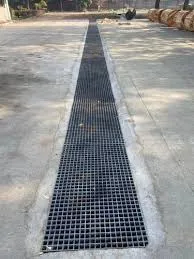
-
 Afrikaans
Afrikaans -
 Albanian
Albanian -
 Amharic
Amharic -
 Arabic
Arabic -
 Armenian
Armenian -
 Azerbaijani
Azerbaijani -
 Basque
Basque -
 Belarusian
Belarusian -
 Bengali
Bengali -
 Bosnian
Bosnian -
 Bulgarian
Bulgarian -
 Catalan
Catalan -
 Cebuano
Cebuano -
 China
China -
 China (Taiwan)
China (Taiwan) -
 Corsican
Corsican -
 Croatian
Croatian -
 Czech
Czech -
 Danish
Danish -
 Dutch
Dutch -
 English
English -
 Esperanto
Esperanto -
 Estonian
Estonian -
 Finnish
Finnish -
 French
French -
 Frisian
Frisian -
 Galician
Galician -
 Georgian
Georgian -
 German
German -
 Greek
Greek -
 Gujarati
Gujarati -
 Haitian Creole
Haitian Creole -
 hausa
hausa -
 hawaiian
hawaiian -
 Hebrew
Hebrew -
 Hindi
Hindi -
 Miao
Miao -
 Hungarian
Hungarian -
 Icelandic
Icelandic -
 igbo
igbo -
 Indonesian
Indonesian -
 irish
irish -
 Italian
Italian -
 Japanese
Japanese -
 Javanese
Javanese -
 Kannada
Kannada -
 kazakh
kazakh -
 Khmer
Khmer -
 Rwandese
Rwandese -
 Korean
Korean -
 Kurdish
Kurdish -
 Kyrgyz
Kyrgyz -
 Lao
Lao -
 Latin
Latin -
 Latvian
Latvian -
 Lithuanian
Lithuanian -
 Luxembourgish
Luxembourgish -
 Macedonian
Macedonian -
 Malgashi
Malgashi -
 Malay
Malay -
 Malayalam
Malayalam -
 Maltese
Maltese -
 Maori
Maori -
 Marathi
Marathi -
 Mongolian
Mongolian -
 Myanmar
Myanmar -
 Nepali
Nepali -
 Norwegian
Norwegian -
 Norwegian
Norwegian -
 Occitan
Occitan -
 Pashto
Pashto -
 Persian
Persian -
 Polish
Polish -
 Portuguese
Portuguese -
 Punjabi
Punjabi -
 Romanian
Romanian -
 Russian
Russian -
 Samoan
Samoan -
 Scottish Gaelic
Scottish Gaelic -
 Serbian
Serbian -
 Sesotho
Sesotho -
 Shona
Shona -
 Sindhi
Sindhi -
 Sinhala
Sinhala -
 Slovak
Slovak -
 Slovenian
Slovenian -
 Somali
Somali -
 Spanish
Spanish -
 Sundanese
Sundanese -
 Swahili
Swahili -
 Swedish
Swedish -
 Tagalog
Tagalog -
 Tajik
Tajik -
 Tamil
Tamil -
 Tatar
Tatar -
 Telugu
Telugu -
 Thai
Thai -
 Turkish
Turkish -
 Turkmen
Turkmen -
 Ukrainian
Ukrainian -
 Urdu
Urdu -
 Uighur
Uighur -
 Uzbek
Uzbek -
 Vietnamese
Vietnamese -
 Welsh
Welsh -
 Bantu
Bantu -
 Yiddish
Yiddish -
 Yoruba
Yoruba -
 Zulu
Zulu
fiberglass clarifier system
Understanding the Fiberglass Clarifier System An Overview
In today's industrial landscape, the demand for efficient water treatment solutions has necessitated the adoption of innovative technologies. Among these solutions, the fiberglass clarifier system stands out as a versatile and effective method for enhancing water quality. This system, crafted from fiberglass-reinforced plastic, offers a wide array of benefits for various applications, including wastewater treatment, industrial processes, and even aquaculture.
What is a Fiberglass Clarifier System?
A fiberglass clarifier system is a type of separation apparatus designed to remove suspended solids and impurities from liquids. The primary function of a clarifier involves creating a quiescent environment where gravity can facilitate the settling of particles. In a fiberglass clarifier, the use of reinforced fiberglass materials enhances durability and resistance to corrosion, making it ideal for harsh environments and demanding applications.
These systems consist of various components, including a feed box, settling tank, effluent weirs, and sometimes a sludge collection mechanism. The flow of water through the clarifier is carefully monitored to optimize the settling process. As water enters the system, heavier particles gravitate to the bottom and form sludge, which can then be periodically removed.
Advantages of Fiberglass Clarifier Systems
1. Corrosion Resistance One of the most significant benefits of fiberglass clarifiers is their resistance to corrosive substances. Many industrial applications involve aggressive chemicals or saline environments that can substantially degrade metal systems. Fiberglass, on the other hand, withstands such conditions, significantly extending the lifespan of the clarifier.
2. Lightweight and Easy to Install Fiberglass is much lighter than traditional materials like steel or concrete. This characteristic not only makes transportation easier but also simplifies the installation process. As a result, fiberglass clarifiers can be deployed in various locations without the extensive foundation work that heavier systems often require.
fiberglass clarifier system

3. Cost-Effectiveness While the initial investment for a fiberglass clarifier may be competitive, the long-term savings are substantial. The durability and efficiency of these systems reduce maintenance costs and downtime. Additionally, they consume less energy, leading to lower operational costs over time.
4. Customizability Fiberglass can be molded into various shapes and sizes, allowing for customization to fit specific site requirements. This flexibility means that operators can design a clarifier system that meets their unique needs, optimizing performance for their particular application.
5. Efficiency in Operation The design of the fiberglass clarifier promotes effective separation of solids from liquids. Enhanced design features, such as internal baffles and weirs, ensure optimal flow characteristics that improve the settling process and maximize water quality.
Applications of Fiberglass Clarifier Systems
Fiberglass clarifier systems are utilized across various industries. In wastewater treatment plants, they effectively remove solids from effluent before it is released into the environment. In industrial manufacturing, they play a crucial role in ensuring that process water is clean and reusable. In aquaculture, efficient water management is essential for the health of aquatic organisms, making these systems vital for maintaining water quality in fish farms and similar operations.
Conclusion
In an era where sustainability and effective resource management are paramount, the fiberglass clarifier system presents a reliable solution for water treatment challenges. Its combination of durability, efficiency, and cost-effectiveness makes it an attractive option for industries seeking to improve water quality while minimizing their environmental impact. As technological advancements continue to evolve, the relevance and application of fiberglass clarifier systems are likely to expand, contributing to a cleaner, more sustainable future. Embracing such innovative solutions can pave the way for industries to operate more responsibly, ensuring that water – a vital resource – remains clean and available for generations to come.









